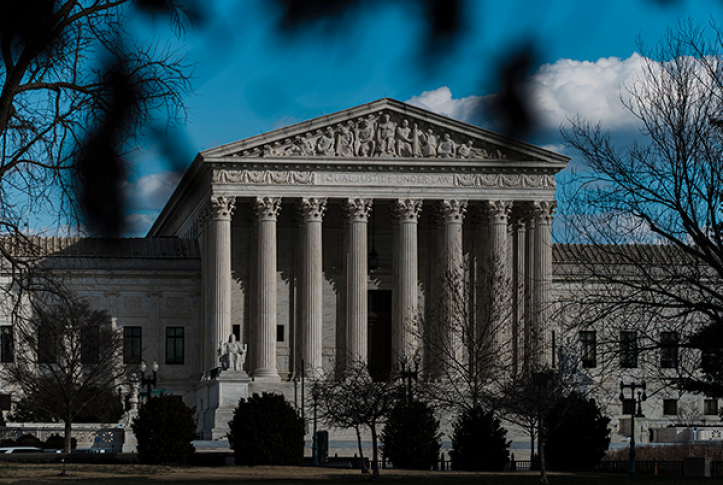When the U.S. Department of Health and Human Services (HHS) — or any federal agency — issues a rule, whether short and simple or lengthy and complex, it must undertake a two-step legal process. At the first step, HHS must decide whether the statute on which the rule is based gives HHS the power to take a particular policy approach — that is, whether HHS’ potential policy position is consistent with the underlying law. Second, as required under the Administrative Procedure Act, HHS must publish the proposed rule for public comment and issue its final rule only after conducting a reasoned analysis that considers and responds to the evidence in the public record.
The often-decisive first step in this process — whether a federal statute could support a particular agency policy position — is on the line in two consolidated cases — Loper Bright Enterprises v. Raimondo and Relentless, Inc. v. Department of Commerce — that will be argued before the Supreme Court on January 17th. These cases concern the power of the Commerce Department to adopt a specific regulatory policy —a rule requiring the herring industry to share in the cost of federal inspectors on fishing boats. But the bigger issue raised by the cases — what makes them a matter of concern for health policy — is how much leeway courts will continue to give federal agencies to decide if they have the power to adopt a particular policy. Since many major federal health policies are found not in the health law statutes but instead in the rules that interpret and apply federal laws, how the Court approaches this question is of vital importance.
For 40 years, under a special Supreme Court judicial doctrine known as Chevron deference, the courts have generally deferred to federal agencies’ interpretation of laws on which its rules are based. This means that judges step in only when they conclude that Congress has “spoken clearly” and the agency’s rule is contrary to the terms of the statute itself. In recent years, the Court has modified Chevron deference to require closer judicial scrutiny that does not defer to the agency’s interpretation of the law. This independent judicial review standard applies to what the courts consider “major rules” — that is, rules of economic and political significance that merit close judicial review rather than the leeway normally given to agencies charged with implementing a statute. The question raised by Raimondo and Relentless is whether to eliminate the distinction between major rules and other rules, thereby potentially eliminating judicial deference to Congressionally appointed agencies. Raimondo and Relentless present such a situation — a rule undoubtedly of major importance to the herring industry, but not to the national economy.
A brief submitted by several U.S. Senators documents that challenges to agency rules typically are brought by regulated industries and their supporters, not by the people the rules were designed to protect. These challengers have the resources to mount endless court battles when they fail to persuade Congress to adopt their antiregulatory positions (e.g., Medicare drug-pricing cases). As the federal courts have drifted into more industry-friendly territory, challenges to agency action have grown.
Two examples — from civil rights and protection for legal immigrants — help illustrate the stakes for health policy if the Court eliminates Chevron deference entirely and instead adopts an aggressive policy of judicial intervention over every rule.
Civil rights. Section 1557 of the Affordable Care Act bars discrimination based on age, disability, race, national origin, color, or sex by “any health care program or activity” that receives federal funding. Congress deliberately drafted the law broadly and gave the HHS Secretary the power to issue implementing regulations. Like many civil rights laws, section 1557 is arguably ambiguous regarding what qualifies as a covered program or activity and what constitutes sex-based discrimination. The Biden administration, in its proposed 1557 rules, interprets covered programs and activities to include all coverage products offered by major health benefits companies, including public plans like Medicare and Medicaid and private employer plans. Similarly, the administration has interpreted sex discrimination in health care to encompass discrimination based on sexual orientation or transgender status. Normal Chevron deference standards might lead courts to defer to HHS’ position that 1557 supports broad interpretation. If the courts wanted to instead substitute their own judgment, they would have to determine that the rule is of national political or economic significance. Were the Supreme Court to eliminate Chevron deference, the courts could simply substitute their views regarding the interpretation of 1557 contrary to Congress’ decision to give HHS broad implementation power.
Immigration law. The Department of Homeland Security concluded that the U.S. immigration law allows legal immigrants to receive public benefits for which they are eligible without fear of deportation. To date, Congressional efforts to overturn the rule have failed. Under current law, aggressive judicial efforts to block the rule would be constrained. However, without limits on judicial power, the federal courts could substitute their views and potentially impose deportation as a possible consequence of enrolling in Medicaid, Supplemental Nutritional Assistance Program (formerly known as food stamps), or public housing programs.
The Supreme Court is poised to revisit this foundational question of the relationship between Congress and federal agencies and the courts; health policy hangs on its decision.

